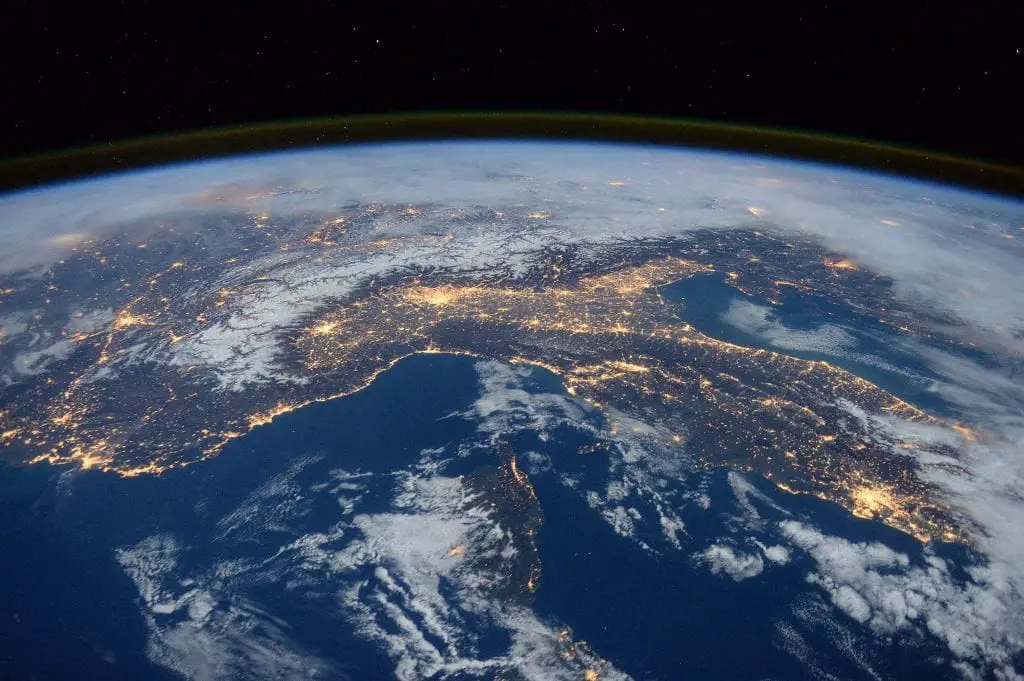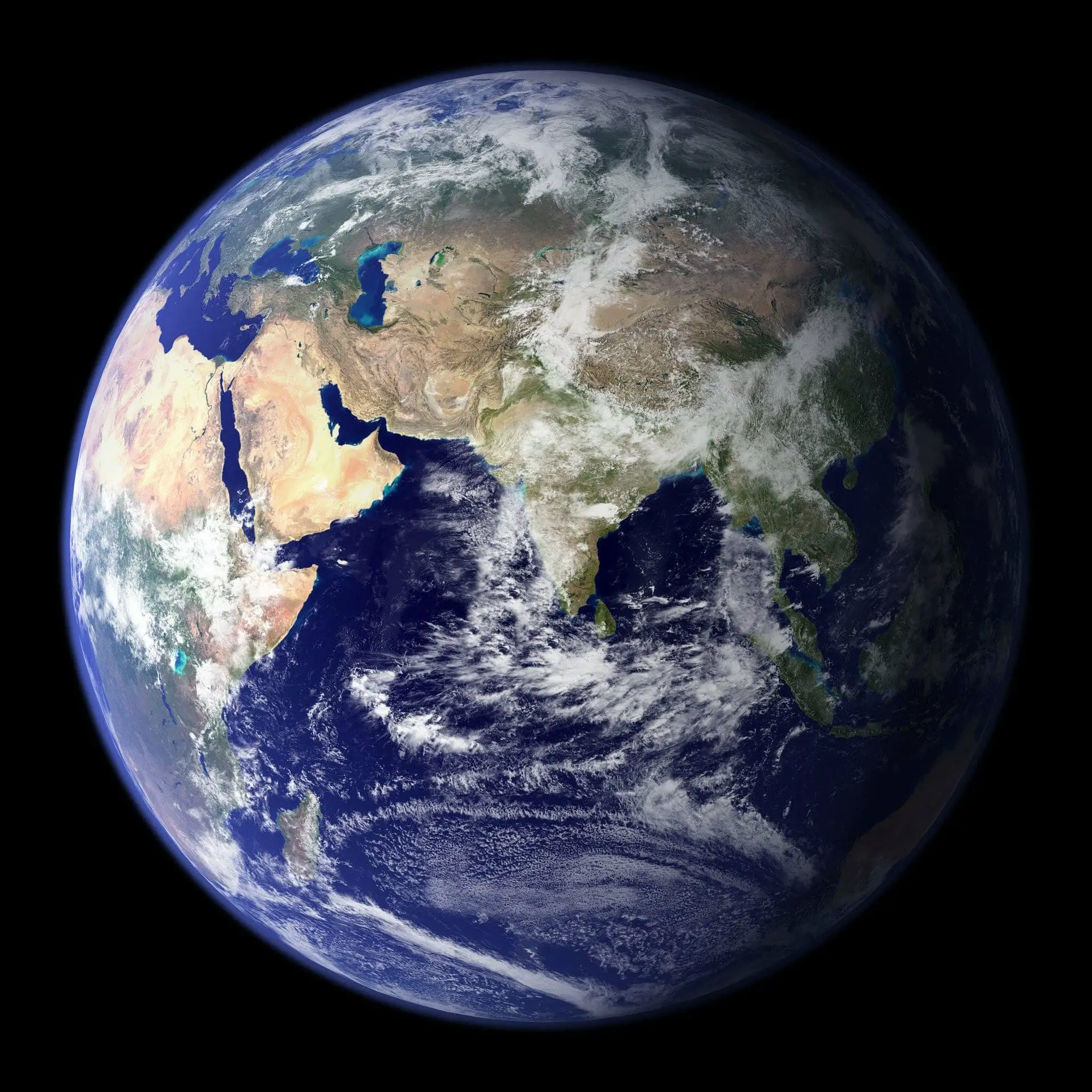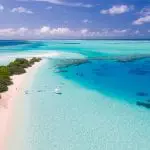There are 8 planets in our solar system, among which Earth is also one. All the planets revolve around the Sun in their orbits, so does the Earth. However, each planet is different and has varied compositions of gases and other atmospheric elements. They also look unique when you see their satellite images, including their colors. While Saturn appears yellow, Mars looks bright red. Sun appears bright white while the moon, ashy grey. Our Mother Earth looks blue, one of the brilliant colors found in nature.
Among all the planets in our solar system, Earth is the only known planet so far to have supported life. It is a special planet because it has the precious life-supporting liquid, the water. Over half of the Earth’s surface is covered by water. That’s right. More than 2/3rd of the planet Earth is covered by oceans, seas, lakes, rivers, glaciers and other forms of water. These things that are blue have made life possible on Earth and their presence is the reason we call this planet ‘The Blue Planet’.
When you look from outer space, the Earth appears blue. While over 70% of Earth is water, only a small portion is covered by land. The oceans are blue, so is the atmosphere. The shade of the blue color, however, varies depending upon the depth of the seas and oceans. While it is light blue in areas close to the landmass, blue is darker in the deeper oceans. The oceans reflect the light of the sky above, hence appear blue. But have you ever wondered why the sky is blue? Here is the explanation to this. The blue light has a shorter wavelength. The atmosphere disperses this more efficiently when compared to the orange or red light (orange and red have longer wavelengths). This is another reason for Earth being called the blue planet.
Why do the oceans appear blue in color?
During daytime, the oceans appear blue. The oceans contain huge amounts of water and the water molecules in them absorb lights of varying wavelengths. These molecules easily absorb ultraviolet, infrared and red light. When you dive into a modest depth, red light will be turned away and things will start looking blue. Go deeper, and the oranges, yellow, and green will be taken away too. Blue will be the last to disappear. While lights of all other wavelengths get effectively absorbed, the blue light gets reflected and re-emitted. Deeper oceans, thus, look blue. If you try clicking a picture in the deep waters, it will appear completely blue. This is the reason seas and oceans look blue.
Why does the Earth look blue from space?

While the top surface of the Earth is covered by water, the deeper crust is red-hot. Right from the Arctic Ocean to the Pacific and the Indian Ocean, this beautiful planet has numerous, huge saltwater bodies besides a number of smaller, freshwater ones. These things that are blue cover over 70 percent of the Earth’s surface. This means, around 3/4th portion of the Earth appears blue and the remaining 1/4th portion covered by land looks greenish-brown. This is the exact reason the Earth appears blue when seen from outer space.
Dispersing of lights in the atmosphere
The Earth’s atmosphere is dominated by two gases namely, oxygen and nitrogen. The molecules present in these gases absorb, radiate and disperse various lights. The lights such as red, orange and yellow have longer wavelengths hence do not get absorbed well. These lights do not get affected by the atmospheric gases. On the other hand, oxygen and nitrogen absorb the blue light, which is having a shorter wavelength and scatter it in all directions. This is why the sky appears blue. However, note that this blue light cannot be viewed from the space. But it plays a significant role in making the Earth appear blue.
Remember, the Earth looks blue from the space during the daytime. But when you observe it at night, the Earth appears black. Why do you think it is so? This is because the atmospheric gases cannot connect with the sunlight during this time.
Earth is an extraordinary planet will all the life-supporting elements present on its surface and in the atmosphere. Most importantly, things that are blue such as oceanic water, rivers and lakes, have played a prominent role in boosting life on the planet. The Earth, better known as the blue planet, is till date the only planet known to have millions of life forms. These wonderful creatures have made the planet lively and beautiful.
What do you conclude?
There are many theories, like the ones we discussed above as to why the Earth appears blue. In fact, this is a difficult question to answer precisely.
· One theory suggests that the oceans reflect the light from the sky. Since 2/3rd surface of the planet earth is covered by water, the Earth appears blue. The clearer the sky, the bluer the oceans. However, this is not the only reason Earth looks blue.
· Except for the cloud cover and a few white patches at the poles, which is the ice, the Earth largely appears blue when viewed from outer space. But there is this threat of global warming, which could lead to the water levels increasing dangerously. This could only add to the planet’s already bluish tint.
· The most interesting explanation that we feel is truly scientific is the scattering of light in the atmosphere. Light travels in waves, and the visible light (part of the spectrum) have wave lengths ranging from 380 nm-750 nm. Blue light has the shortest wavelength and the atmosphere effectively absorbs and scatters this. This is why Earth appears vivid blue.
The Earth itself isn’t blue. But if you orbit the planet, you will see a large part of it looks blue. With 70 percent of the planet’s surface covered by the deep oceans, our Earth undeniably appears blue.




